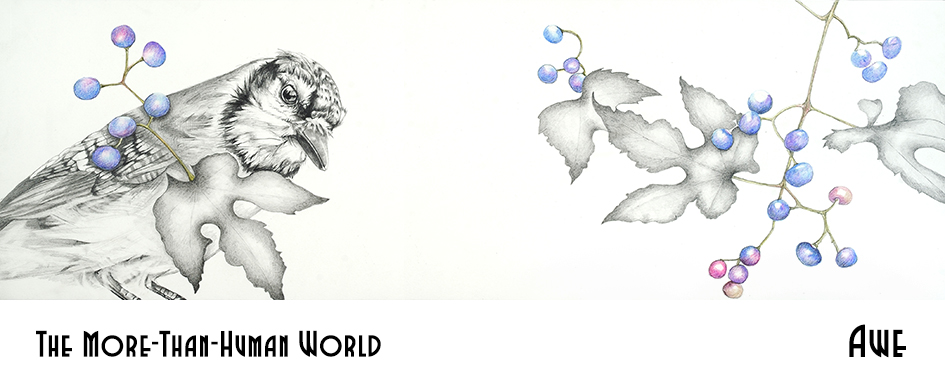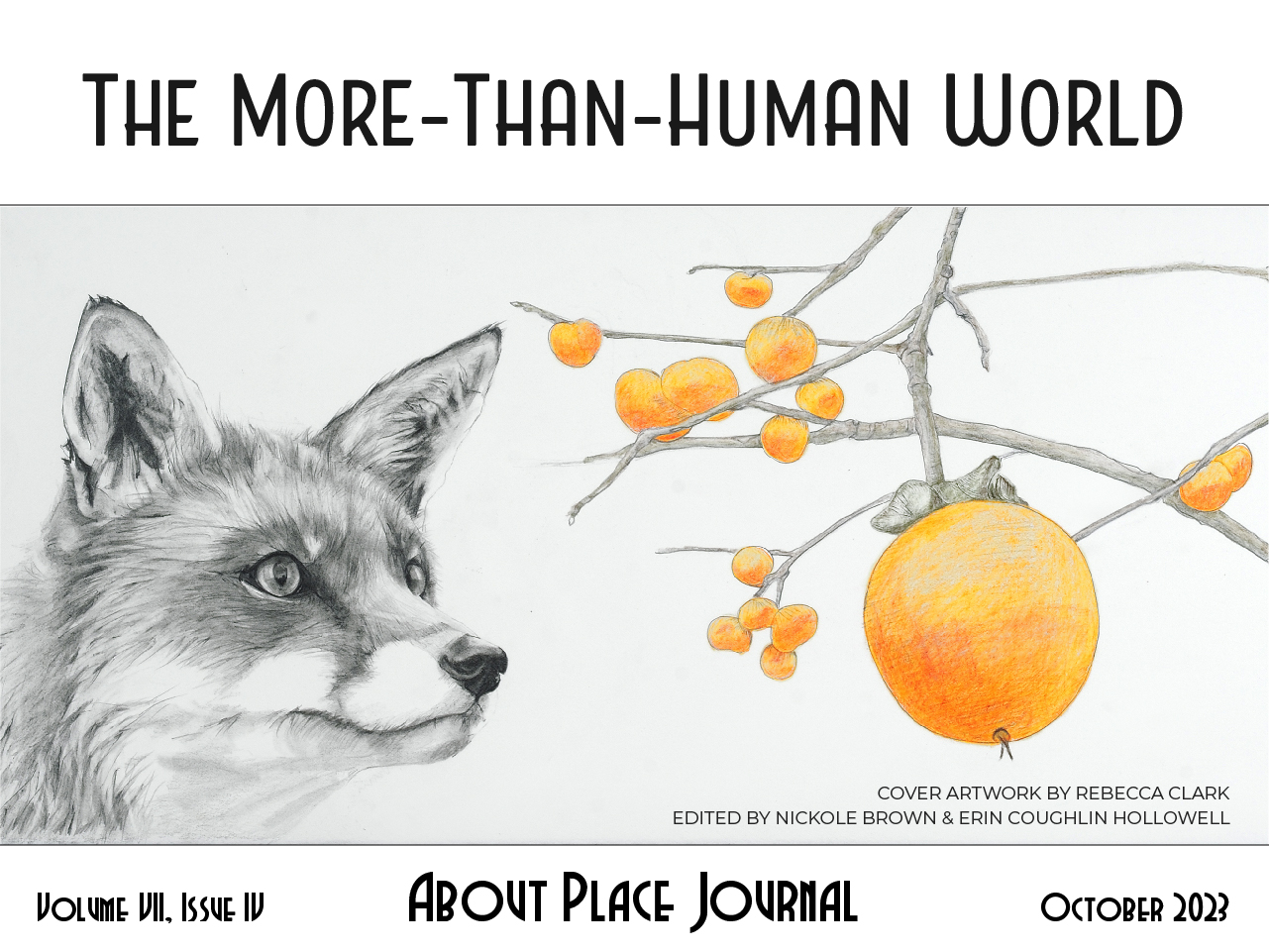inside, a fire
in every room
At 14° above zero, the leathery leaves release their intensity of curl, begin their slow rise, defy gravity one degree at a time. In silhouette, the whorled leaves droop loose from their petioles, oddly the same angle and shape as praying mantis wings. In pre-dawn shadow, a single bud shapeshifts into an insect head and the leaf-mantis perches, frozen in its devotion. At 31° the ring of leaves flatten out and up like a fan, can almost flutter but have no flex. How like my midwinter spirits—they could use such a lift.
white wing-crescents
undulating flight
the pileated calls
At exactly zero degrees, the tightest rolled leaves I’ve seen hang straight down—at each end, the leaf’s pale inside peeks out, a sharpened tip, each cluster of leaves like so many pencils suspended without a holder. Brittle to touch, they feel like paper but contain no script—the way, in my dry winter brain, thought gets caught between idea and fruition. Then, after the ice storm and three days at 5° encased in winter’s glass, the leaves belie the true outside: they all lay open, shine broad and flat, caught in the memory of a warmer time.
tree trunks rub and creak
the big dipper drops
out of the clouds
Today, as dawn sheds a hint of light, the snow-covered shrub tells me it is 28°. Each ovoid leaf is barely cupped, hangs at ease from the juncture of bud. There is some softening in the world. Small hummocks of fluffy powder rest on every green curve, delicate and still.
red cardinal
white avalanche


